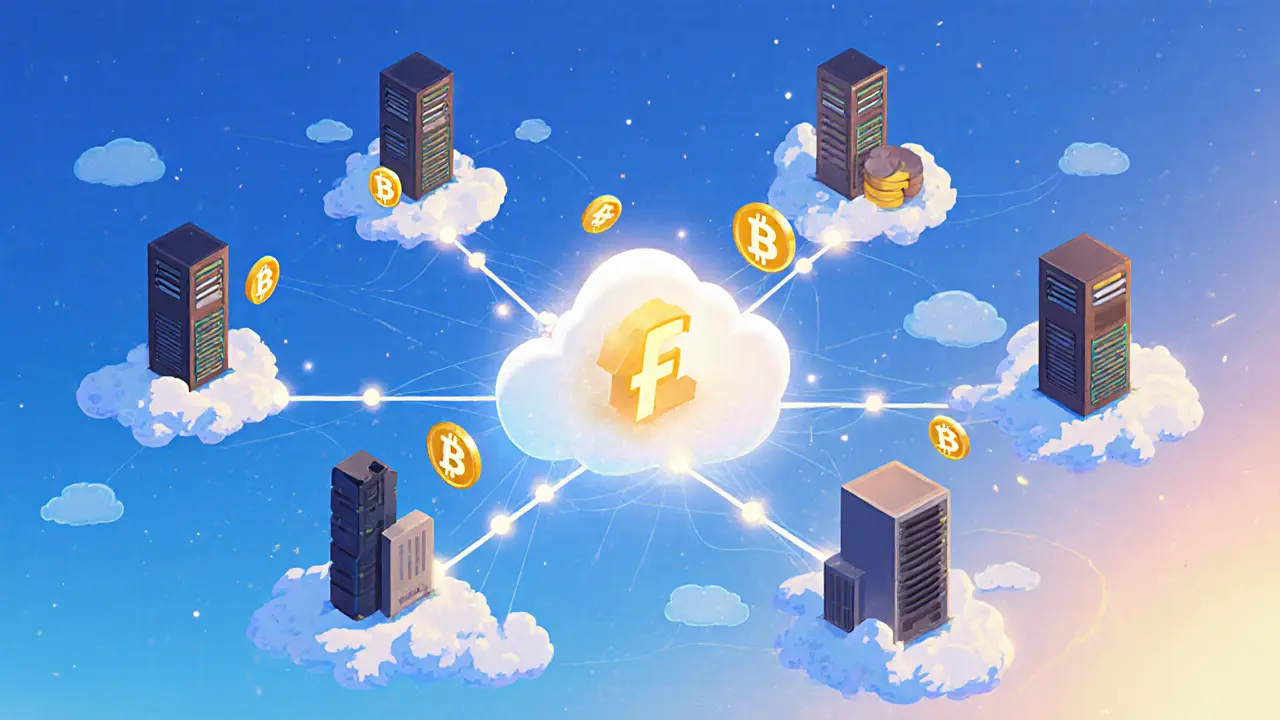A clear, easy‑to‑read guide that explains what Flux (FLX) crypto coin is, how its token works, key ecosystem components, and how to get started.
FluxOS: Decentralized Cloud Computing Explained
When working with FluxOS, a decentralized cloud network that lets anyone run apps on a globally distributed set of machines. Also known as Flux OS, it combines blockchain security with on‑demand computing power, offering a true peer‑to‑peer alternative to traditional cloud services. If you’ve ever wondered how you can host a game server, a website, or a heavy AI model without renting space from a big provider, FluxOS is the answer. It turns idle PCs, servers, and even smartphones into a shared resource pool, all coordinated by smart contracts. In short, FluxOS gives you the freedom of cloud‑like scalability while keeping costs low and control in your hands.
One of the core pieces that makes FluxOS work is the FLUX token, the native cryptocurrency used to pay for resources, incentivize node operators, and secure the network. When you request compute power, the system automatically deducts the required amount of FLUX from your wallet. Node owners earn FLUX for providing CPU, RAM, and storage, which creates a self‑balancing economy. This token‑driven model ensures that resources are always available when demand spikes, similar to how ride‑sharing apps match drivers with riders in real time.
FluxOS is part of a broader decentralized cloud, an ecosystem where computing power is distributed across many independent participants rather than a single corporate data center. Compared to centralized providers, a decentralized cloud offers higher resilience—if one node goes offline, others pick up the slack instantly. It also reduces the risk of data being locked behind a single vendor’s policies. For developers, this means you can launch globally reachable services without negotiating contracts or worrying about vendor lock‑in.
Another key concept tied to FluxOS is smart contracts, code that runs on the blockchain to automate agreements and enforce rules without a middleman. In FluxOS, smart contracts manage everything from resource allocation to payment settlement. When you spin up a virtual machine, a contract records the terms, monitors usage, and triggers FLUX payments at the end of the session. This automation eliminates manual billing and guarantees that both users and providers get exactly what they agreed to.
Because FluxOS blends blockchain, token economics, and cloud computing, it touches several practical use cases. Gamers can host low‑latency multiplayer servers across the world, content creators can stream high‑definition video without relying on a single CDN, and AI researchers can run heavy models on a cost‑effective, on‑demand grid. Each of these scenarios appears in the posts below, whether it’s a deep dive into tokenomics, a guide on deploying a dApp, or an analysis of how decentralized finance projects leverage FluxOS for backend processing.
Below you’ll find a curated set of articles that unpack everything from legal nuances in crypto‑friendly countries to step‑by‑step tutorials on using FluxOS for real‑world projects. Whether you’re a beginner curious about how decentralized clouds work, or an experienced trader looking for token insights, the collection offers concrete examples and actionable tips that you can apply right away.

